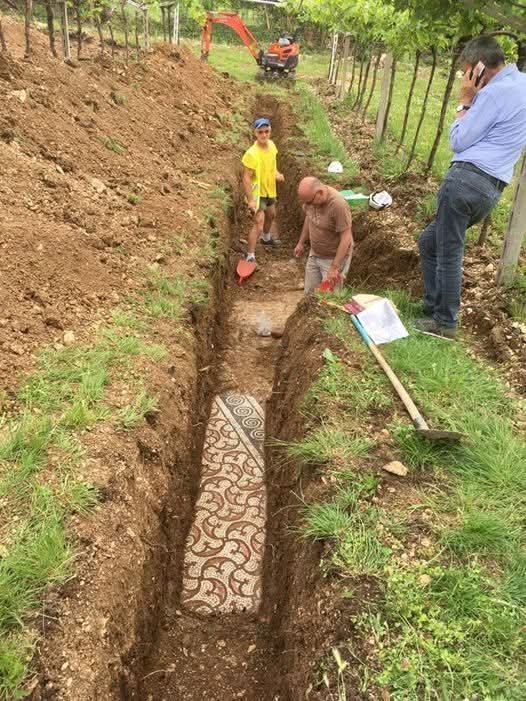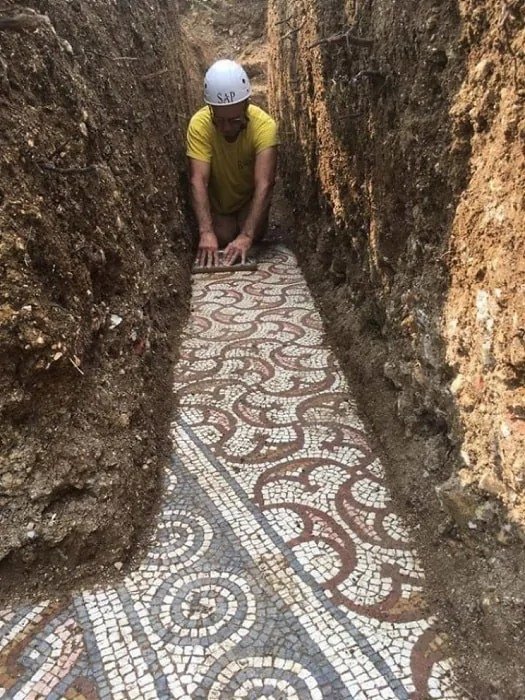For nearly a century, archaeologists have dedicated their efforts to uncovering the ruins of an ancient Italian villa, and their persistence has finally paid off with a remarkable discovery. Recently, a stunning Roman mosaic was unearthed beneath a farm in the picturesque hills above Negrar di Valpolicella, located in northeastern Italy. This beautiful artifact offers a glimpse into the rich history of the region and the artistry of its ancient inhabitants.
The mosaic, which features a meticulously crafted floor design, is believed to be part of the same villa that researchers had previously identified years ago. Composed of intricate geometric patterns, the mosaic is made from a combination of marble and glass tesserae, each piece carefully arranged to create a vivid display of artistry. Beneath this remarkable surface, several layers of mortar reveal that the flooring has undergone numerous repairs over time, suggesting its use and significance throughout the centuries.

This discovery holds immense importance not only for the field of archaeology but also for the local community. The mosaic is expected to provide invaluable insights into the history and culture of this particular region of Italy, serving as a testament to the perseverance and dedication of those who have tirelessly sought to uncover its hidden treasures. It is hoped that this finding will inspire future generations to continue the search for similar archaeological wonders, fostering a deeper appreciation for their heritage.
Currently, experts and specialists are engaged in researching the safest and most effective methods for excavating this breathtaking mosaic floor, which is believed to date back to the third century AD. The careful excavation process is crucial to preserving the exquisite layout of the mosaic while preventing any damage to its intricate design.

The significance of this mosaic extends beyond its visual beauty; it offers a window into the daily lives of people in antiquity, providing priceless information about their culture, lifestyle, and artistic skills. Further research into this remarkable find can illuminate the secrets of this fascinating period, enriching our understanding of history.
Last summer, the Superintendent of Archaeology, Fine Arts, and Landscape in Verona initiated a new excavation at the site, which had remained dormant since 1922. Shortly after the excavation began, the team stumbled upon the mosaic—a captivating find that had eluded researchers for nearly a century. The news of this discovery quickly spread across the internet, particularly after archaeologist Myko Clelland shared a viral tweet about the find, generating significant public interest and excitement.
Now, the Superintendence faces the challenge of collaborating with landowners and local authorities to devise a comprehensive strategy for showcasing this archaeological treasure to the public. This process will require considerable time and resources, as careful monitoring is essential to ensure the integrity of the site throughout the excavation and presentation phases.
Once this previously concealed piece of history is made accessible to the public, it will allow people to learn more about the unique culture of the region and appreciate its significance in the broader context of Italy’s rich historical tapestry. This mosaic not only represents a remarkable artistic achievement but also serves as a bridge connecting us to our ancestors and their enduring legacy.








Leave a comment